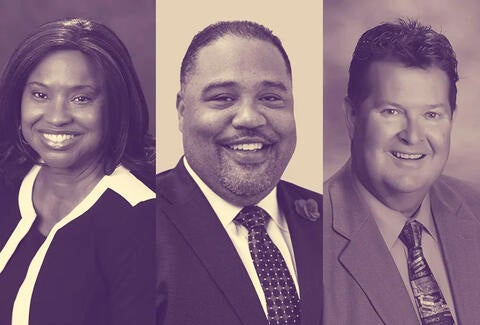During this year’s Youth Voice Week, we published an article by guest contributor Helen Obuna, who was part of a youth-led research team investigating access to out-of-school-time experiences. Of the many lessons learned, Obuna says, most importantly, she “found that youth voice and leadership are essential in building programs that meet the needs of young people.”
We encourage you to read the rest of Obuna's piece, which (spoiler alert) came in at number eight this year on our Top 10 Articles by page visit. Other posts include interviews with researchers, practitioners, and Wallace staff; updates on work in progress; and because it’s 2024, even AI found its way in there.
What cuts across all of our top stories this year is the importance of voice. Whether it's youth speaking out about research they conducted, arts organizations explaining their place in the community, or principals telling it like it is about the myths they encounter every day, these folks have a lot to say. We're privileged to help them get their voices out into the world.
And so, without any further ado, here are Wallace’s Top 10 Articles of 2024:

10. Can Cross-Sector Partnerships Make a Difference for Adolescents?
This year, Gigi Antoni, Wallace’s vice president of youth development, and our youth development team led a one-year effort to learn if cross-sector partnerships could provide opportunities for young people. We chatted with Gigi midway through this effort, and there will be plenty more to report in the New Year.

9. Checking in on the Advancing Well-Being in the Arts Initiative
What does it mean for arts organizations founded by, with, and for communities of color to thrive holistically? Wallace’s writer Sarosh Syed breaks down our multifaceted Advancing Well-Being in the Arts Initiative, speaking with team leaders at the foundation and two grantees who are working closely with their local communities.

8. How Youth-Led Research Really Makes a Difference
Guest contributor Helen Obuna was a lead youth researcher on a report, Youth Perspectives on Designing Equitable Out-of-School-Time Programs. Here, she writes about why she joined that project, what she learned, and how her experience prepared her for a research career in medical anthropology.

7. Arts Learning Is Learning. Full Stop.
How do we make youth arts programs both engaging and educational for young people, particularly those from marginalized communities? That’s a question Erica Halverson (UW Madison) sought to answer in her recent work. In a Q&A with Wallace VP of research Bronwyn Bevan, Halverson points to four practices that could help increase engagement in youth arts.

6. Supporting School Leaders of Color
While the demands of being a principal are always challenging, they are often magnified for leaders who identify as Black, Indigenous, People of Color (BIPOC). The National Association of Elementary School Principals came up with a way to bring much needed support to school leaders of color through its Principals of Color Network. We get all the details here.

5. Building Arts Audiences: Strategies That Hold Up
While so much has changed in the past decade for performing arts organizations looking to build audiences, a lot has stayed the same. Here's a refresher on nine practices that have helped organizations increase arts participation over the years, along with examples of how the organizations put them into use.

4. Why Assistant Principals Deserve More Attention
Though often overlooked, assistant principals play a crucial role in student success and overall school improvement. A research synthesis shows that improving assistant principal mentorship, training, and diverse hiring practices are some ways to help both AP’s and their schools thrive.

3. What Do School and District Leaders Need to Know About AI?
School leaders: If you’re unsure of how you feel about AI, you’re not alone. Three education leadership professionals discuss the gains and pitfalls of generative AI’s use in education. What does learning look like in this new frontier, and how can educators best work with this technology?

2. What Does an Effective Principal do?
Hear from principals, district and state leaders, and university officials who have thoughts on what makes a good principal.

1. Busting 5 Myths About Being a Principal
Think a principal’s job is easy? Think again. Many principals say they are often fighting a perception battle about what they actually do day to day. We spoke with three principals to learn directly from the source about what the job is really like and to rebut some of the misconceptions.




